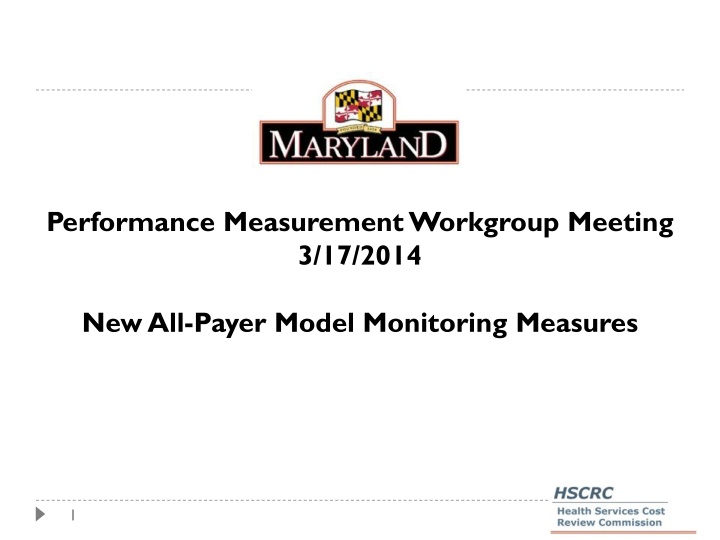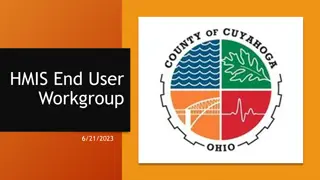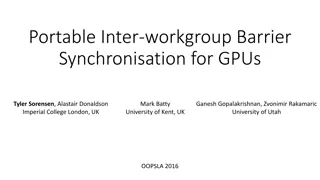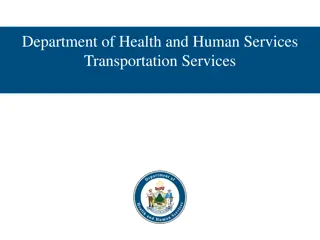
Comprehensive Overview of Maryland's New All-Payer Model and Monitoring Measures
Explore the significant aspects of Maryland's innovative All-Payer Model, focusing on its purpose, hypotheses, recent challenges in the healthcare system, and the theory of action behind this transformative approach. Delve into the model's commitment to improving population health, enhancing care delivery, and reducing costs while ensuring sustainability and impact. Discover how direct and indirect financial incentives, along with collaborative initiatives, drive the transformation of the healthcare delivery system towards better outcomes.
Download Presentation

Please find below an Image/Link to download the presentation.
The content on the website is provided AS IS for your information and personal use only. It may not be sold, licensed, or shared on other websites without obtaining consent from the author. If you encounter any issues during the download, it is possible that the publisher has removed the file from their server.
You are allowed to download the files provided on this website for personal or commercial use, subject to the condition that they are used lawfully. All files are the property of their respective owners.
The content on the website is provided AS IS for your information and personal use only. It may not be sold, licensed, or shared on other websites without obtaining consent from the author.
E N D
Presentation Transcript
http://broadneck.info/wp-content/uploads/2009/05/maryland_logo.jpghttp://broadneck.info/wp-content/uploads/2009/05/maryland_logo.jpg Performance Measurement Workgroup Meeting 3/17/2014 New All-Payer Model Monitoring Measures 1
Contents of Presentation New All-Payer Model Context, Purpose, Hypotheses Theory of Action and Logic Model Overview New Model Monitoring Commitments 2
The Recent Rise in Inpatient Hospital Cost Placed New Stresses on the Payment System The previous waiver placed the emphasis on cost per admission Not optimized to address overall health care spending or promote comprehensive and coordinated care across different settings The tight constraint on per inpatient admission payments induced providers to increase the rate of inpatient admissions or inappropriately shift costs to outpatient settings 3
New Model Purpose and Hypotheses Purpose To test whether transformation efforts will produce greater results when implemented in the context of an all-payer rate setting system. Specifically, the model will test whether an all-payer system for hospital payment that is accountable for the total hospital cost of care on a per capita basis is an effective model for advancing better care, better health and reduced costs. Hypotheses 1. An all-payer system for hospital payment that is accountable for the total hospital cost of care on a per capita basis is an effective model for advancing population health by raising the quality of health care delivery, improving population health, and reducing cost. 2. New payment and delivery system models implemented in the context of an all-payer rate setting system will have greater sustainability and impact when compared to payment and delivery system models in other states. 4
Three-Part Aim Construed Broadly in the Model Design 5
Theory of Action and Logic Model Illustrate the Major Moving Parts of the New Model at a High Level Incorporates direct and indirect financial incentives Direct financial incentives- Include bonuses for improving performance on quality measures. Indirect financial incentives- Payment models that favor care integration that lowers inpatient volume and improves quality. Incentives accelerate change and evolve over time, shifting focus from cost per admission to the cost per patient. The model also facilitates delivery system transformation by encouraging hospitals to: Participate in local public health coalitions, Share savings with physicians and other providers, Participate in bundled payment arrangements, Accountable Care Organizations, and to work collaboratively with physicians in patient centered medical homes. Logic models and driver diagrams are very useful tools for understanding and illustrating the relationships between outputs, inputs, methods, and outcomes. 6
Monitoring Commitments and Data Sources Outlined in the CMS Contract: Main Areas Performance Targets Guardrails Compliance Data Monitoring Data Patient Experience of Care Measures Population Health Measures Hospital Cost Measures 9






















